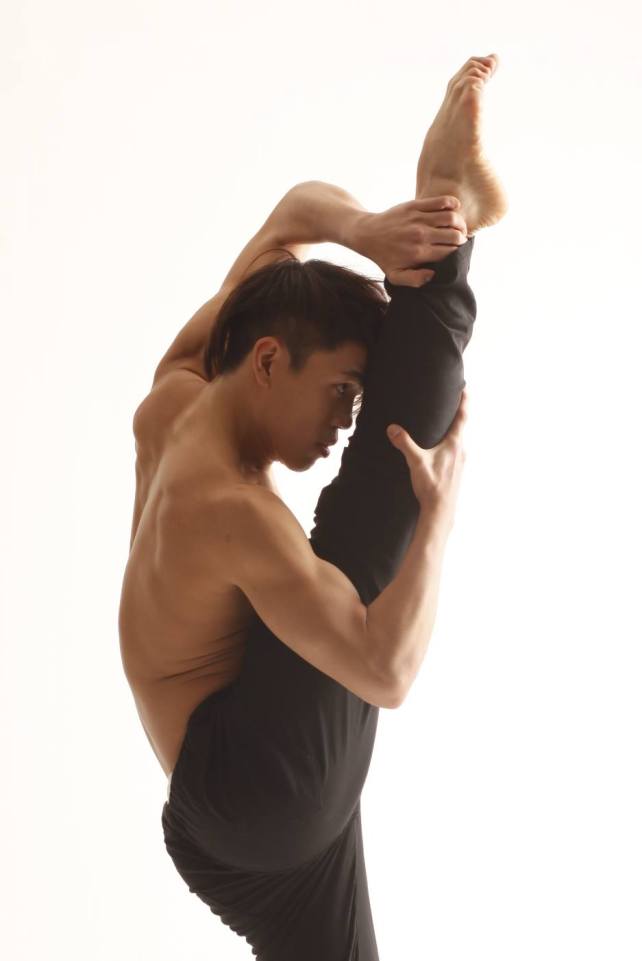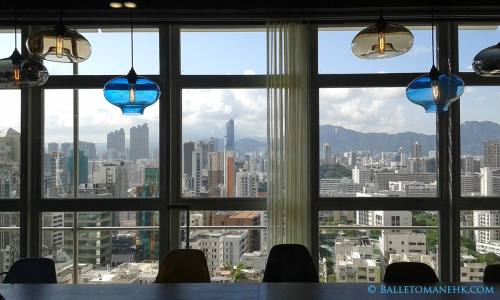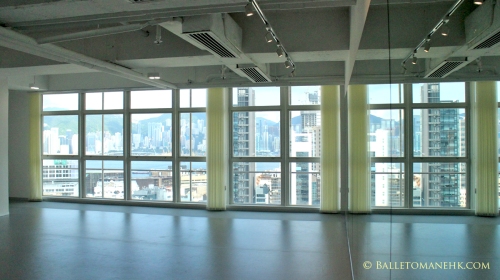
The performance of Pinocchio by the Hong Kong Ballet earned enthusiastic applause from the audience.
Last Saturday I had a most enjoyable afternoon watching “Pinocchio,” a brand new production by the Hong Kong Ballet that marked both the start of the company’s 2015 fall season and the world première of the ballet itself. I almost didn’t go, as the previous couple of programs by the company made me close to lose faith in its future productions. Luckily, a review by art critique Carla Escoda in Backtrack and her personal recommendation with a simple urge, “Go!” made me change my mind. I am so glad I did purchase the tickets after all, as the production was anything but a disappointment. In fact, the highly creative elements—the engaging acting, the beautiful dancing, the fitting and grand musical score, the wonderful orchestral performance and the sophisticated and expensive costumes, lighting and set design—combined to give me an impression that this production was top-notch and meticulously put together, resulting in a strong emotional impact disguised in a child’s play. Instead of finding myself noticing flaws and yawning from time to time, my senses were delighted and I found myself pleasantly surprised again and again during the entire performance.
 The ballet started with a good pace, with a quick introduction by the Cricket (danced by Dong Ruixue) to the opening scene. The lack of a prelude as in other classical story ballets is a plus for today’s impatient audience, especially since an important target audience of this ballet are children. The lighthearted score by Italian composer Ottorino Respighi blends extremely well with the storytelling, putting the audience right into the mood for a series of intriguing adventures to unfold.
The ballet started with a good pace, with a quick introduction by the Cricket (danced by Dong Ruixue) to the opening scene. The lack of a prelude as in other classical story ballets is a plus for today’s impatient audience, especially since an important target audience of this ballet are children. The lighthearted score by Italian composer Ottorino Respighi blends extremely well with the storytelling, putting the audience right into the mood for a series of intriguing adventures to unfold.
I laughed when a three-year-old seated next to me screamed to her mother, “I’m scared, let’s go home!” when the piece of pine wood from which Pinocchio would emerge arrived at the home of Geppetto (danced by Li Lin). Isn’t this ballet supposed to be made for children? Oh wait! Very soon, the kid calmed down and was engaged by the storytelling. The entrance of Pinocchio, danced by Hong Kong Ballet’s new soloist from Italy, Vittorio Galloro, who made his début with the company in this matinee performance, made a strong impression on me as his clumsy and stiff movements convincingly resembled that of a wooden puppet and the costume was masterfully designed to give the illusion of bulkiness and inflexibility.
Gradually, Pinocchio learned to move in a smoother fashion and then picked up a few dance steps. I don’t know how many others in the audience felt the way I did, but I could actually relate to this as I reminisce on how I initially picked up ballet steps when I started to take lessons as an adult!
Almost too quickly though, Pinocchio was given a book by Geppetto to head to school, and the audience most likely did not catch the transition well enough to make out the emotional development between the boy and his “father.” But given the fact that the complex original story had to be told in two acts with 20 different scenes, some of the nuances in transitions were sacrificed.
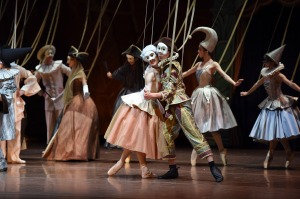
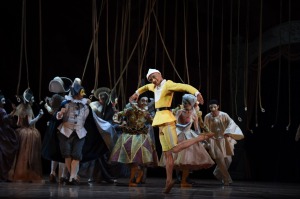
The next scene depicts a fantastically executed commedia dell’arte scene as observed by the wide-eyed Pinocchio at a marionette theater. The neo-Baroque music beautifully threads together the movements of the masked marionettes, with a clearly defined plot featuring the classical characters of the Arlecchino (Shen Jie), Arlecchina (Arianne Lafita Gonzalvez, also a new soloist of the company this season), Columbina (Jessica Burrows) and Pietro (Gong Yi Wen). At the end of the theatrical performance, Pinocchio went to join the puppets and released their hands from the ropes that tied them. To me, this act took on a profound philosophical tone. I am not sure if it was intended or not by the Swedish choreographer Pär Isberg. What came to my mind was the liberation of the slaves from their semi-conscious/zombie state, and Pinocchio suddenly became the hero as the puppets became aware of their freedom and independence! According to the story line, he took part in the performance, which earned him some gold coins from the theater director. Here I find a lapse in logic as Pinocchio is supposed to have done something naughty (selling his book to buy the theater ticket and forgetting the purpose of going to school). But I find him all the more likable for his heroic deed!
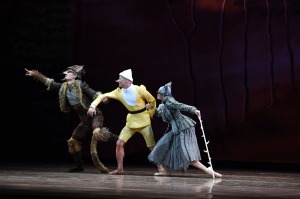
The next scene, featuring the Blind Cat (Vanessa Lai) and the Fox (Xia Jun), contains my favorite solo numbers. I was particularly impressed with the performance of Hong Kong-born Vanessa Lai, whose talent is obviously appreciated despite having only been in the company for two years (as apprentice and then as corps member). Her nimble movements reflect that of a cat so very well, with a tinge of sensuality and humor. Her pas de deux with Xia Jun was seamless and entertaining. And I really loved the backdrop showing the trees with 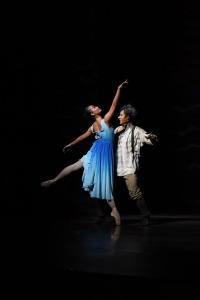 golden coins! Kudos to the incredibly talented painter Jordi Castells from Spain. The plot of this scene was clearly played out, leaving no doubt in the audience’s mind with regards to what was happening. One can’t help but feel pity for the wooden boy for being duped by these two cunning characters.
golden coins! Kudos to the incredibly talented painter Jordi Castells from Spain. The plot of this scene was clearly played out, leaving no doubt in the audience’s mind with regards to what was happening. One can’t help but feel pity for the wooden boy for being duped by these two cunning characters.
Starting from the next scene on, I had difficulty making out what happened that eventually led Pinocchio into such agony that called for the rescue of the kind-hearted Blue Fairy (Liu Maio-miao). In fact, the whole rationale behind the elongation of Pinocchio’s nose was not clearly expressed. It is understandable that certain details of the story do not lend themselves well to expression by dance movements, but even so, here is where I found the weakest part of the ballet. The transition was contrived and confusing, to say the least. The role of the Blue Fairy is not very strong either. Fortunately, the character was saved by the graceful dancing of Dong Ruixue, who exerted a calming energy throughout.
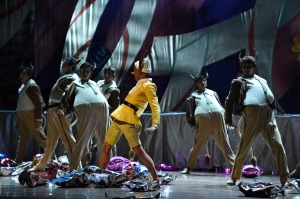
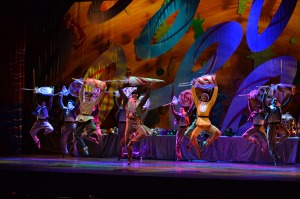
The Land of Candy and Play scene made me laugh so much as the slim and muscular dancers suddenly appeared with gigantic stomachs at the verge of explosion! That was the result of ingesting too many giant-sized candies, another thing that triggered my laughter. How perfectly this Felliniesque scene depicts our time—the mindless addiction to all things sugary, until everybody goes into a trance without realizing the harmful effects on the mind and body. Of course, this is also my own interpretation, a social commentary that wasn’t perhaps intended? Who knows! Something to ponder upon after the giggles.
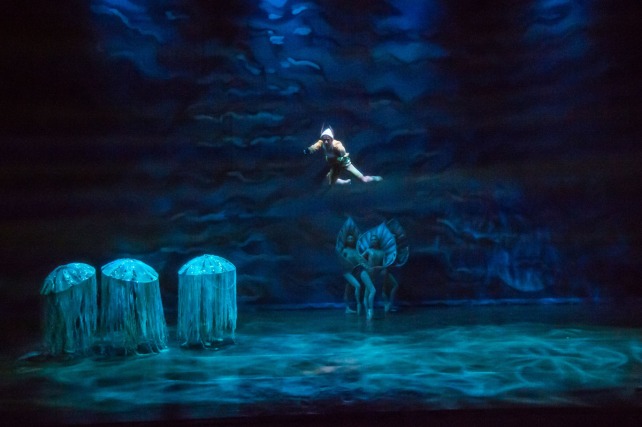
The underwater scene in the second act was the highlight in terms of the set design. Kudos to Bo-Ruben Hedwall, a set designer with extensive experience working for Swedish Television. It was so sophisticated that at times, it boggled the mind how the scenes were produced. For adults and children alike, the characters of all the sea animals—jelly fish, turtles, starfish, seahorses and little fishes—were all lovable. 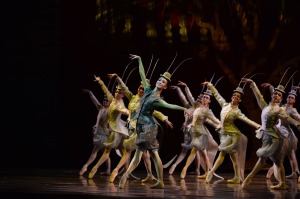 The costume design by Jérôme Kaplan really excelled in this scene, although it is equally sophisticated and flamboyant in the other characters, especially the Cricket. Later on when Pinocchio found himself in the ocean waves looking for his lost father, the beautiful flowing blue fabrics weaved together a marvelous sight to behold. It gave me yet another Felliniesque flashback—one from the powerful, risqué and odd tale of Casanova.
The costume design by Jérôme Kaplan really excelled in this scene, although it is equally sophisticated and flamboyant in the other characters, especially the Cricket. Later on when Pinocchio found himself in the ocean waves looking for his lost father, the beautiful flowing blue fabrics weaved together a marvelous sight to behold. It gave me yet another Felliniesque flashback—one from the powerful, risqué and odd tale of Casanova.
The final scene with the score from Respighi’s “The Pines of Rome” was nothing short of dramatic, and rightly so as we witnessed Pinocchio’s transformation into a human being after having learned the earthly lessons of what it means to be human—through being “naughty” and experiencing everything from deception, gluttony to betrayal, his triumph in rescuing and reconciling with his father ultimately made the audience’s hearts melt.
What I love about this ballet is that any bravura steps were not executed simply to impress. For example, when Pinocchio made his high jumps, he did them deliberately with a lack of precision sometimes to show that he was still mastering his movements in his adaptation to a human body. In a way, this takes the pressure off the dancer from the stereotypical demand for perfection and puts the focus on the storytelling itself.
Vittorio Galloro was tremendously engaging as a dancer and actor. Congratulations to him for a brilliant début! I certainly look forward to more of his performance with the company in the future.
I think the captivating power of the Pinocchio ballet lies in the emotional message in it—not so much the moralistic rendition of the Disney version of the tale, that telling lies leads to punishments and regrets, and a good child must be honest; but more about our ability to transcend and grow into our fullest potentials.
Like Pinocchio, every one of us goes through life with all its fascinating, gratifying, ecstatic, fearful, unpleasant and dark moments, yet we are not stuck in one state or another. Life keeps moving, and as long as we keep on exploring for ourselves and learn the lessons along the way, we will grow into who we are truly meant to be. The transformation of Pinocchio into a full-fledged human gives us a glimpse of that non-dying hope for humanity.
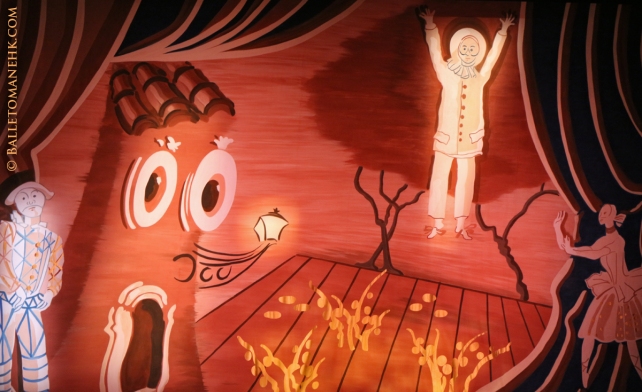
Backdrop Painting by Jordi Castells
Having led the Hong Kong Ballet for six years, Artistic Director Madeleine Onne from Sweden has finally created an original ballet that Hong Kong can be proud of. Sure, one can argue that it is a largely Swedish production with a strong Italian theme. But with the participation of local talents, such as Ava Mok working on props and Billy Chan working on lighting, as well as dancers from Hong Kong, mainland China and around the world, this production represents the international spirit of the city in its best light. I hope Pinocchio is not a one-time affair but have a chance to tour overseas and surprise the world what a high-calibre ballet company Hong Kong possesses. Rather than keep on producing the same-old, same-old classical ballets, why not devote more time to creating something original like this? Of course, a production like Pinocchio probably costs millions of dollars to create. But this is certainly a step in the right direction if the company is to do something worthwhile—something that will make a strong artistic imprint in the world.
Media articles on Pinocchio:
Hong Kong Ballet unveils a sumptuous and sophisticated Pinocchio (Bachtrack)
Hong Kong Ballet reinvents classic fairy tale Pinocchio (Preview by SCMP)
Interview: Choreographer Pär Isberg – Pinocchio (Time Out HK)
Review: Hong Kong Ballet’s Pinocchio has great dancing, costumes and sets, but is let down by score (Review by SCMP)
Photo credits: Except for the top and bottom photos, all are by Hong Kong Ballet’s commissioned photographers, Tony Luk, Conrad Dy-Liacco and Kitmin Lee.
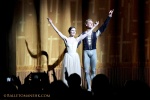




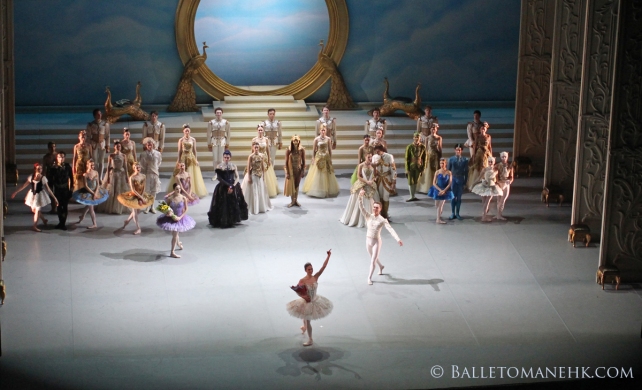
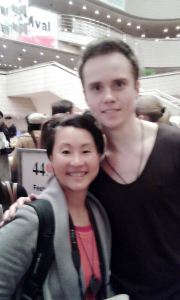
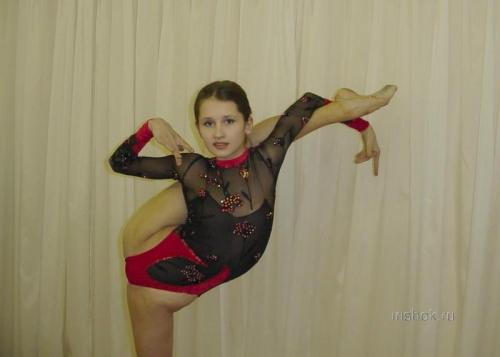

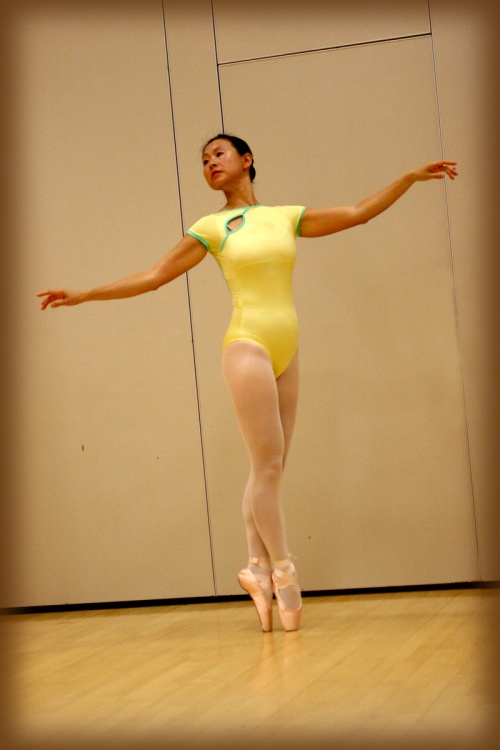










 The costume design by Jérôme Kaplan really excelled in this scene, although it is equally sophisticated and flamboyant in the other characters, especially the Cricket. Later on when Pinocchio found himself in the ocean waves looking for his lost father, the beautiful flowing blue fabrics weaved together a marvelous sight to behold. It gave me yet another Felliniesque flashback—one from the powerful, risqué and odd tale of Casanova.
The costume design by Jérôme Kaplan really excelled in this scene, although it is equally sophisticated and flamboyant in the other characters, especially the Cricket. Later on when Pinocchio found himself in the ocean waves looking for his lost father, the beautiful flowing blue fabrics weaved together a marvelous sight to behold. It gave me yet another Felliniesque flashback—one from the powerful, risqué and odd tale of Casanova.


